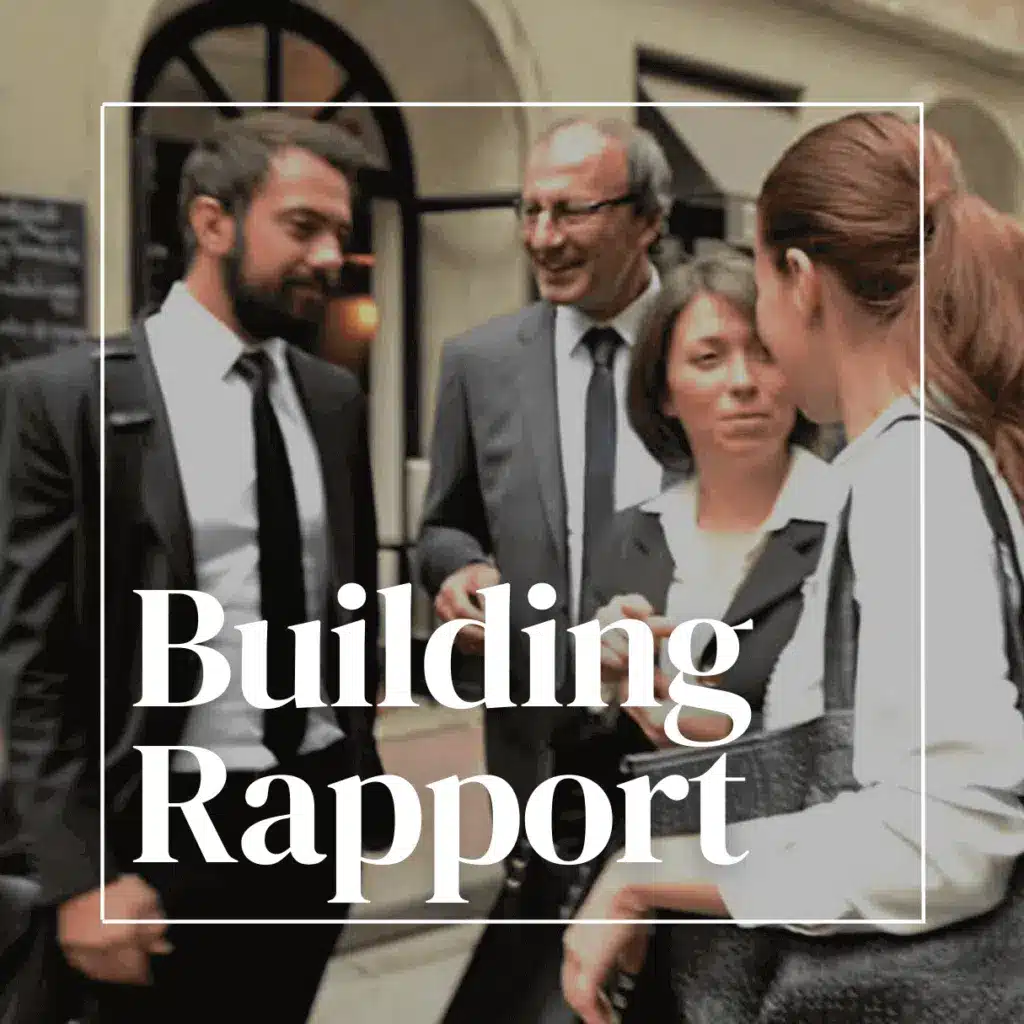Smooth Sailing: How to Avoid Conflict and be Agreeable
PART THREE of 3 part series
Building rapport isn’t just about making a great first impression or using positive body language. It’s also about keeping others onside even if you don’t agree with them. People are more likely to agree with what you say or buy what you’re selling if they like you. So the golden rule is to get people onside with you first
To achieve that goal, having an agreeable manner is one of the most important habits you can cultivate. People love those who are agreeable and dislike those who disagree. To be agreeable with anyone who is critical of you, either agree if it’s true or agree with the critic’s right to their opinion.
1. How to agree with the Truth
The most powerful response you can give to your critic is to agree with the truth of what they say and then restate your position.
For example:
Mother: If you go out late tonight, you’ll have trouble getting out of bed for work in the morning.
Daughter: You’re probably right! But I love being out with my friends and can’t wait to go!
The daughter has agreed with the truth of her mother’s criticism, while at the same time maintaining her own position.
Sue: ‘I don’t think you should quit your job, Adam. You’re a key person in the company and if the economy goes bad you’ll still have a job. Going into business alone has no guarantees!’
Adam: ‘You’re absolutely right, Sue. There are no guarantees, but I know I’ll do well and I’m really looking forward to this opportunity!’
Adam agreed with the truth of what Sue said. He didn’t argue with her or put himself or her down and he still maintained his position without being aggressive.
2. How to agree with your critic’s right to an opinion
Sometimes, you will disagree with your critic’s opinion, but you can still agree with their right to have an opinion, however silly you think their opinion is.
For example:
David: ‘If you keep on spending all your money on clothes Monica, you’ll end up broke!’
Monica: ‘I understand how you might feel that way Dave, but I just love the feeling of having a lot of different outfits.’
Leanne: ‘How could you buy a Mazda, Glen? You know Toyotas are much better cars!’
Glen: ‘Your opinion is understandable, Leanne and – you’re right – Toyotas are great cars, but I just love the feel of the Mazda!’
Glen and Monica both agreed with their critic’s right to an opinion.
Glen also agreed with the truth – but neither of them backed away from their position or made the other person feel wrong. Even when you totally disagree with their criticism, there is usually a way of being agreeable while affirming what you believe to be the truth.
Your goal should be to always make others feel right, even when you don’t agree with them.

Here are the five keys to becoming an agreeable person:
- Decide to be agreeable with every person you meet.
Develop an agreeable nature and make others feel right. - Agree with the Truth.
Let others know that you agree with something they said. Nod your head and say, ‘Yes, you’re right’ or ‘I agree with you’. - Agree with your critic’s right to an opinion.
Even when you think they are talking complete nonsense, acknowledge that it’s OK for them to think that way while, at the same time, you restate what you believe to be true. - Admit it when you are wrong. People who admit fault are admired by others but most people prefer to deny, lie or lay blame. If you’re wrong say:
‘I certainly got that wrong …’
‘I really blew it …’
‘I was wrong …’ - Avoid arguing. You can rarely win an argument, even if you’re right. Arguing loses friends and credibility and gives fighters what they want– a fight.
Becoming an agreeable person is a conscious decision that can greatly enhance your personal and professional relationships. The first key to becoming agreeable is to develop an agreeable nature and make others feel right. This means actively listening to others and trying to understand their perspectives, even if you don’t necessarily agree with them. It also means being open-minded and flexible, and willing to compromise when necessary.
When you avoid arguments, you’ll build more trusting and rewarding relationships with others.

Becoming a rapport-building rockstar takes practice, but it is a set of skills that can be learned – and that will pay you back over and over again. By using positive body language, making a great first impression, and keeping others onside, you’ll be well on your way to building stronger relationships with customers, colleagues, and everyone in between. Remember to stay open-minded, be respectful, and always strive to understand the other person’s perspective. With these tips, you’ll be a rapport-building rockstar in no time!
Did you miss anything in this series? Check out Parts One and Two here:
How to become a Rapport-Building Rockstar
Conquer the Conversation
Copyright Allan Pease
About the Authors:
Over 5 decades of studying and teaching human communication and body language, Allan and Barbara Pease have identified the Body Language and People Skills that underpin charisma and harmony in personal and professional relationships. Across their shared 18 International Top 10 Bestsellers, the dynamic duo has distilled the most powerful rapport-building techniques into easy to learn methods to help millions of people around the world to live a more positive and successful life.
Share This

Want FREE Help To Connect & Influence People Better?
Subscribe now and receive free growth strategies delivered to your inbox.



